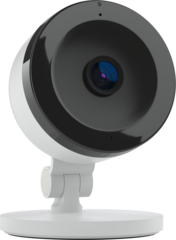Google Voice Commands in TC2 for Android
PostedUpdate 01/13/22: This feature has now been expanded upon, but only for the ProSeries panels. You can read all about it here!
The Total Connect 2.0 Mobile App for Android now allows users to arm, disarm, and check current system status using Google spoken voice commands. This handy new feature can be very useful for quickly and conveniently controlling your Honeywell Security System from almost anywhere.

In order to use Google voice commands with TC2, you must have the feature set up for your phone. To enable, go to Settings > Apps > Total Connect 2.0 > Enable Microphone. Once configured, you should see a blue microphone button in the bottom-right corner of the TC2 App. You can click on this button to have your phone begin listening for voice commands. At this time, only arming/disarming and status commands are available. We are hopeful that more commands will be arriving in the future.
Also keep in mind that you will need to give Total Connect 2.0 permission to use the microphone for your phone. Make sure to adjust the appropriate app permissions if you have not already done this. Remember that you can only make TC2 voice commands while you have the app opened. Google will not be able to understand any commands intended for TC2 unless they are performed through the app.
Please note that some commands may require a valid code entry. The following voice commands are available within the TC2 Android App:
- Arm Stay: Puts the system in Arm Stay mode.
- Arm Away: Puts the system in Arm Away mode.
- Disarm: Disarms the system.
- Home: Returns you to TC2 App home screen.
- Sensors: Displays list of programmed sensors.
- Keypad: Displays on-screen virtual keypad.
- Events: Displays Events list.
- Settings: Opens the TC2 Settings Menu.
- Profile: Opens your TC2 Profile.
- Location Settings: Opens the TC2 Locations Menu.
- Manage Locations: Opens the Manage Locations tab within the Locations Menu.
- Change Password: Opens the Change Password tab within your TC2 Profile.
- Help: Opens the Help Menu.
- Sign Out: Logs you out of TC2 and closes the app.
If you have any questions about this feature, or if you are interested in starting monitoring service for use with Total Connect 2.0, please email us at support@alarmgrid.com. We check our email from 9am to 8pm ET M-F. We look forward to hearing from you and helping you get the most out of Total Connect 2.0.











 A positive trait for the DIY security industry is its ability to quickly adapt to changing global conditions and major ongoing events. Throughout the global COVID-19 pandemic, people have had to make significant changes and compromises to their daily routines. Every industry is different, and the reality is that some sectors have had an easier time adapting and conforming to the evolving world we live in than others. We are proud to say that the DIY security industry has served as an ideal role model and example of how businesses should adapt to an unpredictable and ever-changing society.
A positive trait for the DIY security industry is its ability to quickly adapt to changing global conditions and major ongoing events. Throughout the global COVID-19 pandemic, people have had to make significant changes and compromises to their daily routines. Every industry is different, and the reality is that some sectors have had an easier time adapting and conforming to the evolving world we live in than others. We are proud to say that the DIY security industry has served as an ideal role model and example of how businesses should adapt to an unpredictable and ever-changing society.